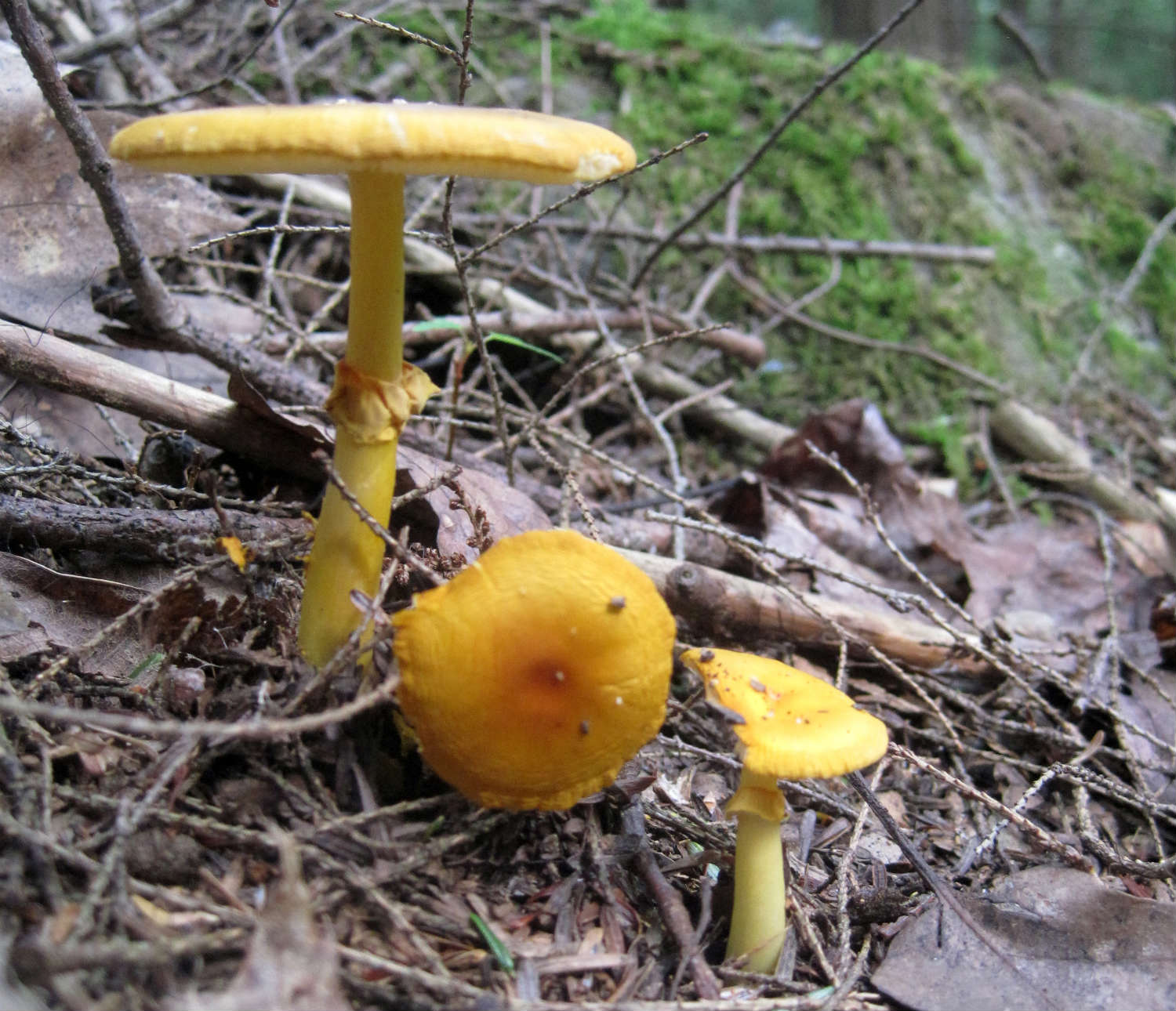
Fungi don’t get the respect they deserve. Maybe that’s because they do most of their work in the dark, beneath the ground or on dead matter, or because there’s something essentially alien and bacterial about their appearance and the way they grow. But fungi are so plentiful and basic to life that they’re recognized as their own phylogenic kingdom. There may be more than 5 million separate species of fungi, and the largest single organism on the planet is a fungus: the four sq. mi. (10 sq. km) Armillaria ostoya fungus, which lives in the soil of Oregon’s Blue Mountains and which may be more than 8,000 yeas old. Without fungi we wouldn’t have antibiotics, blue cheeses and most importantly, beer. And we won’t even get into the magic kind.
Fungi also play an important role in the carbon cycle, the biogeochemical process by which carbon—the essential element of life on Earth—moves between the air, soils and water. Plants sequester carbon dioxide, but when they die, that carbon enters the soil—a lot of it. Globally, soil is the biggest single terrestrial reservoir of carbon, far more than the amount of carbon contained in living things and in the atmosphere combined. (On a planetary scale, the oceans hold by far the most carbon.) As the dead plant matter is broken down by microbes in the oil, that carbon is released back into the air. The rate at which that carbon leaves the soil can obviously have a major impact on the amount of carbon in the atmosphere, which in turn helps drive climate change.
(MORE: Climate Change Might Just Be Driving the Historic Cold Snap)
One of the limits to the growth of those decomposing microbes is the availability of nitrogen in the soil. Living plants and soil microbes compete for nitrogen, and the less nitrogen is available to the microbes, the slower decomposition is—and the more carbon remains in the soil, instead of outgassing into the atmosphere. This is where the fungi come in. Most plants have a symbiotic relationship with mycorrhizal fungi: the fungi extract the nitrogen from the soil, and make it available to the plants through their roots. But according to a new study in Nature, one major type of the symbiotic fungi can extract nitrogen much more quickly than other types—and that in turn slows the growth of the competing microbes and leaves much more carbon locked away in the soil.
Researchers from the University of Texas, Boston University and the Smithsonian Tropical Research Institute ran computer models on data from more than 200 soil profiles from around the world. They found that soils dominated by ecto- and ericoid mycorrhizal (EEM) fungi contain as much as 70% more carbon than soils dominated by arbuscular mycorrhizal (AM) fungi. That’s because the EEM fungi produce more nitrogen-degrading enzymes, which allows them to extract more nitrogen from the soil. They essentially outcompete the soil microbes, which slows down their ability to decompose dead plant matter and return carbon from the soil to the atmosphere. “This analysis clearly establishes that the different types of symbiotic fungi that colonize plant roots exert major control on the global carbon cycle, which has not been fully appreciated or demonstrated until now,” said Colin Averill, a graduate student at the University of Texas and the lead author of the paper.
That relationship between the different types of fungi and plants is so important for the carbon cycle because it’s independent of temperature, precipitation, soil clay content and all the other variable factors that can influence plant growth and soil content. Perhaps unfortunately for us, though, AM fungi symbiosis is far more common, occurring in approximately 85% of plant families, while just a few plant families have a symbiotic relationship with EEM fungi. That could change as the composition of forests change, however, but we wouldn’t know the effects until scientists add the role of the different kinds of symbiotic fungi into global climate models, which they have yet to do.
“This study shows that trees and decomposers are really connected via these mycorrhizal fungi, and that you can’t accurately predict future carbon cycling without thinking about how these two groups interact,” said Averill. “We need to think of these systems holistically.” The humble fungus won’t be forgotten.
(MORE: A Newly Discovered Underground Lake in Greenland Will Help Us Understand Climate Change)
More Must-Reads from TIME
- Why Trump’s Message Worked on Latino Men
- What Trump’s Win Could Mean for Housing
- The 100 Must-Read Books of 2024
- Sleep Doctors Share the 1 Tip That’s Changed Their Lives
- Column: Let’s Bring Back Romance
- What It’s Like to Have Long COVID As a Kid
- FX’s Say Nothing Is the Must-Watch Political Thriller of 2024
- Merle Bombardieri Is Helping People Make the Baby Decision
Contact us at letters@time.com